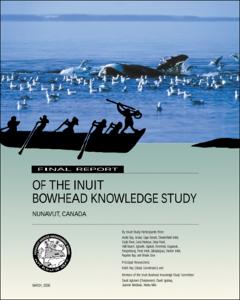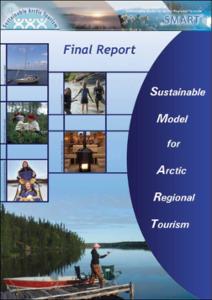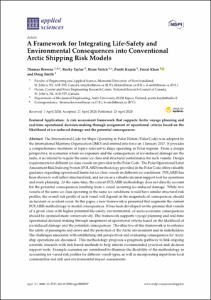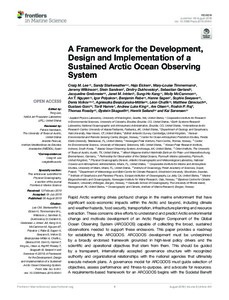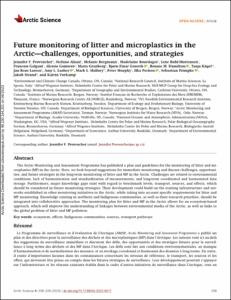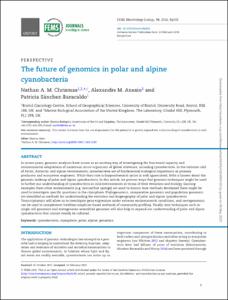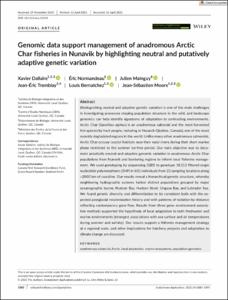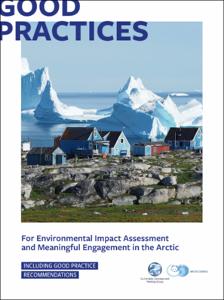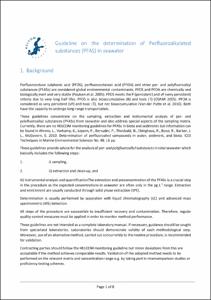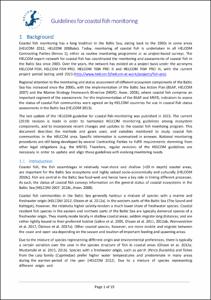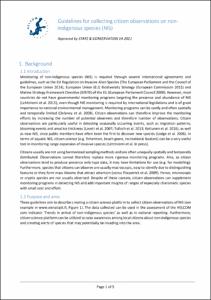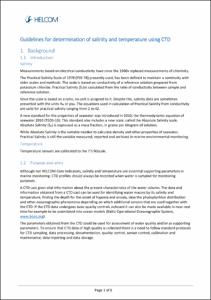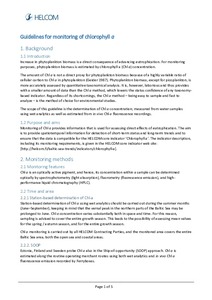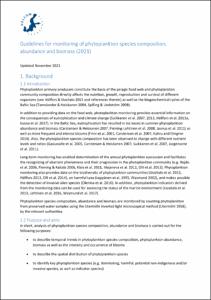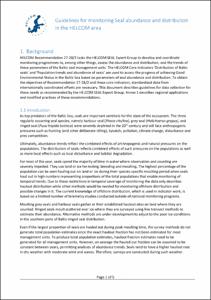Browsing CAPARDUS Practices by Title
Now showing items 71-90 of 244
-
Final Report of the Inuit Bowhead Knowledge Study, Nunavut, Canada.
(Nunavut Wildlife Management Board, Nunavut, Canada, 2000)As mandated by the Nunavut Land Claims Agreement of 1993, Inuit knowledge of bowhead whales in Nunavut, Canada was collected by means of 257 individual interviews with 252 Inuit hunters and elders in 18 ... -
Final Report. Sustainable model for Arctic Regional Tourism.
(State Provincial Office of Lapland and Kemi-Tornio University of Applied Sciences, Finland., Rovaniemi, Finland, 2006)he purpose of the Sustainable model for Arctic Regional Tourism (SMART) – project was to assist the arctic tourism sector, mainly local small- to medium-sized tourism businesses (SMEs) and other local stakeholders to develop ... -
A framework for co-production of knowledge in the context of Arctic research.
(2022)The Arctic has been home to Indigenous Peoples from time immemorial. Distinct Indigenous worldviews and complex knowledge systems have been passed on from generation to generation, evolving over time in a living process ... -
A Framework for Integrating Life-Safety and Environmental Consequences into Conventional Arctic Shipping Risk Models.
(2020)Featured Application A risk assessment framework that supports Arctic voyage planning and real-time operational decision-making through assignment of operational criteria based on the likelihood of ice-induced damage and ... -
A Framework for the Development, Design and Implementation of a Sustained Arctic Ocean Observing System.
(2019)Rapid Arctic warming drives profound change in the marine environment that have significant socio-economic impacts within the Arctic and beyond, including climate and weather hazards, food security, transportation, ... -
Future monitoring of litter and microplastics in the Arctic--challenges, opportunities, and strategies.
(2022)The Arctic Monitoring and Assessment Programme has published a plan and guidelines for the monitoring of litter and microplastics (MP) in the Arctic. Here, we look beyond suggestions for immediate monitoring and discuss ... -
The future of genomics in polar and alpine cyanobacteria.
(2018)In recent years, genomic analyses have arisen as an exciting way of investigating the functional capacity and environmental adaptations of numerous micro-organisms of global relevance, including cyanobacteria. In the extreme ... -
Genomic data support management of anadromous Arctic Char fisheries in Nunavik by highlighting neutral and putatively adaptive genetic variation.
(2021)Distinguishing neutral and adaptive genetic variation is one of the main challenges in investigating processes shaping population structure in the wild, and landscape genomics can help identify signatures of adaptation to ... -
Good Practices for Environmental Impact Assessment and Meaningful Engagement in the Arctic – Including Good Practice Recommendations.
(Arctic Council Sustainable Development Working Group and Arctic Environmental Impact Assessment (EIA) Project, Tromsø Norway, 2019)This report discusses the themes (chapter 3), and presents recommendations (chapter 4), while also highlighting good practice cases (chapter 5) Specific models for meaningful engagement of Indigenous Peoples are also ... -
Guideline for the determination of heavy metals in sediment.
(HELCOM, Helsinki, Finland, 2018)This Technical note provides advice on the analysis of heavy metals in total marine and coastal sediments and sieved fractions, including sampling and sample handling. The analysis of heavy metals in sediments basically ... -
Guideline on the determination of Perfluoroalkylated substances (PFAS) in seawater.
(HELCOM, Helsinki, Finland, 2018)Perfluorooctane sulphonic acid (PFOS), perfluorooctanoic acid (PFOA) and other per- and polyfluoroalkyl substances (PFASs) are considered global environmental contaminants. PFOS and PFOA are chemically and biologically ... -
Guidelines for coastal fish monitoring.
(HELCOM, Helsinki, Finland, 2019)Coastal fish communities are influenced by a plethora of impacting variables, including human-induced pressures related to overexploitation, climate change, eutrophication, contaminants, habitat degradation, effects of ... -
Guidelines for collecting citizen observations on non-indigenous species (NIS).
(HELCOM, Helsinki, Finland, 2021)Monitoring of non-indigenous species (NIS) is required through several international agreements and guidelines, such as the EU Regulation on Invasive Alien Species (The European Parliament and the Council of the European ... -
Guidelines for determination of salinity and temperature using CTD.
(HELCOM, Helsinki, Finland, 2017)Salinity Measurements based on electrical conductivity have since the 1960s replaced measurements of chlorinity. The Practical Salinity Scale of 1978 (PSS-78) presently used, has been defined to maintain a continuity ... -
Guidelines for monitoring of chlorophyll a.
(HELCOM, Helsinki, Finland, 2016)Increase in phytoplankton biomass is a direct consequence of advancing eutrophication. For monitoring purposes, phytoplankton biomass is estimated by chlorophyll a (Chl a) concentration. The amount of Chl a is not a ... -
Guidelines for monitoring of phytoplankton species composition, abundance and biomass.
(HELCOM, Helsinki, Finland, 2021)Long-term monitoring has enabled determination of the annual phytoplankton succession and facilitates the recognizing of aberrant phenomena and their progression in the phytoplankton community (e.g. Hajdu et al. 2006, ... -
Guidelines for monitoring of radioactive substances.
(HELCOM, Helsinki, Finland, 2020)Routine station network for regular monitoring programme is recommended as indicated in the following list and maps. Sampling frequency is once a year. Additional stations and samples are recommended, and reporting of the ... -
Guidelines for monitoring of turbidity.
(HELCOM, Helsinki, Finland, 2017)Turbidity estimates the impact of light scattering due to particles on the level of light attenuation in the water column. It is affected by total suspended solids (i.e., organic and inorganic particles) in the water, and ... -
Guidelines for monitoring of water transparency (Secchi depth).
(HELCOM, Helsinki, Finland, 2017)Water transparency serves as an index for the trophic state of a water body. It reflects eutrophication through changes in the phytoplankton abundance; increase in the ambient nutrient status in the water leads to higher ... -
Guidelines for monitoring Seal abundance and distribution in the HELCOM area.
(HELCOM, Helsinki, Finland, 2018)HELCOM Recommendation 27-28/2 tasks the HELCOM SEAL Expert Group to develop and coordinate monitoring programmes to, among other things, assess the abundance and distribution, and the trends ofthese parameters of the Baltic ...
 Repository of community practices in Ocean Research, Applications and Data/Information Management
Repository of community practices in Ocean Research, Applications and Data/Information Management
